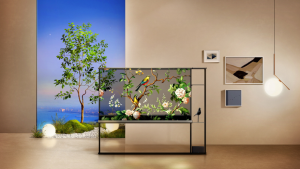Rapid urbanisation and modernisation are sweeping through the developing world. We see major cities around the world rushing to increase and improve their infrastructure in order to support their growing populations.
Ghana’s capital city of Accra is one such place. According to doctoral researcher, Lewis Abedi Asante, the West African nation is one of the few countries on the continent where half of its population can be found in two of its major cities, namely Accra and Kumasi.
The residents of Accra are witnessing a hurried attempt by local and national government to redesign, reconstruct and redevelop the city to help support the increasing pressure being placed on the city’s infrastructure,as people flock towards these city centres in search of jobs and better living environments.
According to Dominique Petit-Frère and Emil Grip, creative strategists and founders of the art platform Limbo Accra, the urban development in Accra mirrors off the ideal fantasy and lifestyle of suburban America without the necessary support structures in place.
However, according to the Limbo Accra team, the city of Accra’s changing identity and influx of new developments are leaving its urban spaces caught in a state of limbo, appearing to await a modern future, while still containing fragments of the past.
Traditional neighbourhoods and architecture are now giving way to new high-rise buildings and luxury apartment blocks.
“Accra finds itself in a bit of an identity crisis in terms of its urban development and city planning,” says Petit-Frère and Grip.
However, it would appear that the hopes of the national and private urban developers appear to be unrealistic. The city is littered with incomplete urban development projects and architectural structures.
According to Petit-Frère and Grip, publicly funded projects in the city end up incomplete due to institutional bureaucracy (with only two out of every three building projects reaching completion) inadequate budgeting and failed land surveying processes. Many structures are built on sites that are unsuitable for their construction.
One of the larger incomplete structures in the city was meant to be a multi-storey, beachfront complex, but the building was abandoned when the property developers discovered a large body of water beneath the soil.
The concrete skeletons that were now decorating the Accra skyline motivated Petit-Frère and Emil Grip to create the Limbo Accra project. Limbo Accra seeks to explore this state of limbo in which the city finds itself. The project set out to re-imagine the public spaces in Accra by means of the production of site-responsive installations in the uncompleted properties and structures.
“Limbo Accra aims to transform contemporary modes of brutalist African architecture into an art of structural explication and spatial revelation,” says Petit-Frère and Grip.
“The metaphor of limbo is summoned to encapsulate the in-between, fallow period of art and life in Accra,” they add.
Limbo Accra is an art installation featured on the walls of the uncompleted architectural structures. The rooms feature a bouquet of art work from artists across Ghana, which includes Serge Attukwei Clottey, David Alabo, Patrick Tagoe-Turkson, Adjoa Armah, Hakeem Adam.
The works of these artists explore the radical new relationships between past attempts to modernise Accra and the city's future.
According to Petit-Frère some pieces interact directly with the building, and some indirectly. Work by Hakeem Adam documents the city’s landscape and architectural details of traditional building styles, whereas Serge Attukwei Clottey’s “Kufuor gallon”, was made up of an installation that covered the walls with the bits of the yellow water containers common in Ghana.
“At its core, the project serves as an opportunity to demonstrate and reflect on how this enormous quantity and diversity of temporarily available property in Accra offer a range of artistic creative possibilities which can give positive impulse for innovation within the creative knowledge economy,” says Petit-Frère and Grip.
Read more:
Conserving Cairo's architectural heritage
Merging architecture, entrepreneurship and digital fabrication in Cameroon










